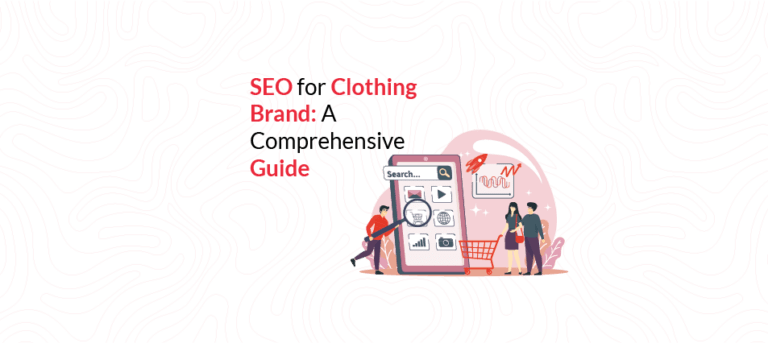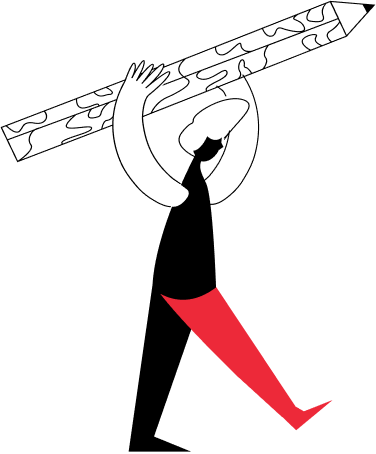From Hypebeast to High Traffic: Cracking the Code of Fashion SEO and Trend Forecasting
Yo fashionistas, data nerds, and everyone in between – buckle up for a deep dive into the fascinating world of fashion e-commerce SEO! If you’re tired of staring at spreadsheets that look like abstract art, and the thought of “keywords” makes you break out in algorithmic hives, fear not! This blog is your decoder ring to understanding how data can be your BFF in conquering the fickle fashion landscape.
Think of your e-commerce site as a digital runway, except instead of strutting models, you’ve got clothes vying for attention. But who decides which threads get the spotlight? The answer, my friends, lies in the whispers of the search engine gods – specifically, in the realm of search demand analysis and trend forecasting.
So, how do we crack this code and dress our site for digital success? Here are six powerful tactics, straight from an IIT alumnus who traded coding equations for fashion formulas:
Keyword Couture: Threading the Needle of Search Intent
Keywords are the building blocks of SEO, but not all keywords are created equal. It’s not just about stuffing your product descriptions like a Thanksgiving turkey; it’s about understanding the search intent behind those words.
Think of it like this: Someone searching for “floral dress” might be in the “dreaming” phase, browsing for inspiration. But a search for “black maxi dress under $50” screams “buying mode.” Your SEO game needs to cater to both these mindsets.
How to:
- Use keyword research tools like Google Trends, Ahrefs, and SEMrush to identify relevant keywords, their search volume, and competition.
- Segment your keywords by intent (informational, navigational, transactional) and tailor your content accordingly.
- Optimize product pages with high-intent keywords in titles, descriptions, and meta tags.
- Create informative blog posts or guides targeting long-tail keywords to capture dreamers before they become buyers.
Example: Let’s say you sell sustainable athleisure. While “eco-friendly yoga pants” is great, someone in buying mode might search for “best recycled leggings for women.” Target both! Write blog posts about sustainable fashion, optimize product pages with both generic and specific keywords, and voila! You’ve cast a wider net.
Trendspotting Like a Fashion Oracle: Decoding the Signals of Style
Fashion is a fickle beast, and trends can vanish faster than a free cookie at a bake sale. To stay ahead of the curve, you need to become a trend oracle, reading the tea leaves of the digital world.
How to:
- Leverage social media like a pro: Track hashtags, follow influencers, and analyze what’s trending on platforms like TikTok and Instagram.
- Embrace Google Trends: This free tool is your crystal ball, showing you rising search queries and seasonal spikes. Keep an eye on related searches – they might reveal unexpected gems.
- Competitive analysis: See what your rivals are doing! Check their top-performing pages, keywords, and content for inspiration (not copying!).
- Industry reports and publications: Stay updated on industry trends and forecasts from fashion giants and research firms.
Example: Say you notice a surge in searches for “cottagecore aesthetic.” Time to stock up on floral dresses, linen pants, and chunky knit sweaters! Create content around the trend, optimize product descriptions with relevant keywords, and watch the organic traffic blossom.
The Long Tail KeywordsGame: Weaving a Niche Net for High-Converting Traffic
Forget casting a wide net; it’s time to weave a niche one. Targeting long-tail keywords – specific phrases with lower search volume but higher purchase intent – can be your golden ticket to loyal customers and conversions.
How to:
- Brainstorm long-tail keywords based on your product offerings and target audience. Think “vegan leather sneakers for men” or “plus-size vintage-inspired dresses.”
- Create dedicated product pages and blog posts targeting these keywords. Offer in-depth information, styling tips, and product comparisons.
- Run targeted ads or PPC campaigns on these long-tail keywords to reach a more qualified audience.
Example: You sell handmade jewelry. Targeting generic terms like “gold necklace” will be tough. But optimize for “chunky gold chain necklace for men” or “dainty gemstone earrings for bridesmaids” – you’ll attract buyers with a higher chance of conversion.
Content is Queen (and King!): Storytelling that Sells Fashion Dreams
SEO isn’t just about keywords; it’s about creating compelling content that engages your audience and tells a story. Think of your product descriptions as mini-fashion novels, blog posts as trend trend reports, and social media captions as witty asides from a runway insider.
How to:
- Use vivid language and descriptive adjectives to paint a picture of your products and make them come alive.
- Highlight the emotions and experiences associated with your clothing. Are they for the confident go-getter or the laid-back beach bum? Tell that story!
- Embrace user-generated content! Showcase customer photos, reviews, and testimonials to build trust and social proof.
- Experiment with different content formats – video reviews, lookbooks, styling guides – to keep your audience engaged.
Example: Instead of just listing features, describe your cozy sweater as “the perfect cuddle companion for movie nights” or your statement dress as “the confidence booster you need to own the room.” Paint a picture, evoke emotions, and watch the click-throughs soar.
The Backlink Blitz: Building Your Runway of Authority
Think of backlinks as votes of confidence in your e-commerce site. The more high-quality websites linking back to you, the higher your authority in the eyes of search engines. But forget spamming the internet with low-value links; it’s all about quality over quantity.
How to:
- Guest blog on relevant fashion websites and publications. Offer valuable insights and expertise in exchange for a backlink.
- Partner with influencers and bloggers for product reviews and sponsored content.
- Get involved in online communities and forums related to your niche. Share your knowledge and build relationships that might lead to natural backlinks.
- Create link-worthy content like infographics, research reports, or trend forecasts that other websites will want to cite.
Example: You specialize in ethical fashion. Reach out to sustainable living blogs or eco-conscious magazines to offer a guest post on the benefits of slow fashion. This not only builds brand awareness but also earns you a valuable backlink from a relevant site.
Data-Driven Decisions: Tweaking Your Runway for Peak Performance
SEO is not a set-it-and-forget-it game. It’s a constant dance of experimentation, analysis, and adaptation. Use data to track your progress, identify what’s working, and what’s not.
How to:
- Track key metrics like organic traffic, keyword rankings, and conversion rates using tools like Google Analytics and Search Console.
- Analyze user behavior on your website to understand what content resonates and where they drop off.
- Regularly re-evaluate your keyword strategy and content approach based on new trends and data insights.
- A/B test different elements of your website, like page layouts, calls to action, and product descriptions, to see what drives better results.
Example: You notice your blog posts about vintage fashion trends are getting high traffic but not many conversions. Use A/B testing to experiment with different calls to action or product recommendations within those posts. See what drives people from “reader” to “buyer” and optimize accordingly.
Remember, fashion e-commerce SEO is a marathon, not a sprint. By mastering these tactics, analyzing your data, and adapting to the ever-changing landscape, you can transform your digital runway into a high-traffic fashion haven. So, put on your data-driven thinking cap, embrace the trends, and get ready to strut your stuff in the SERPs!
Bonus Tip: Don’t forget the power of mobile! Optimize your website and content for mobile devices, as that’s where a large chunk of your fashion-loving audience will be browsing.
Conclusion-
Step into a world where your fashion e-commerce site doesn’t just follow trends – it sets them, all while climbing to the top of search engine results. With O+, every SEO challenge becomes an opportunity for growth and innovation.
Join O+ on this SEO journey, where style, sophistication, and search engine success are woven seamlessly together.














